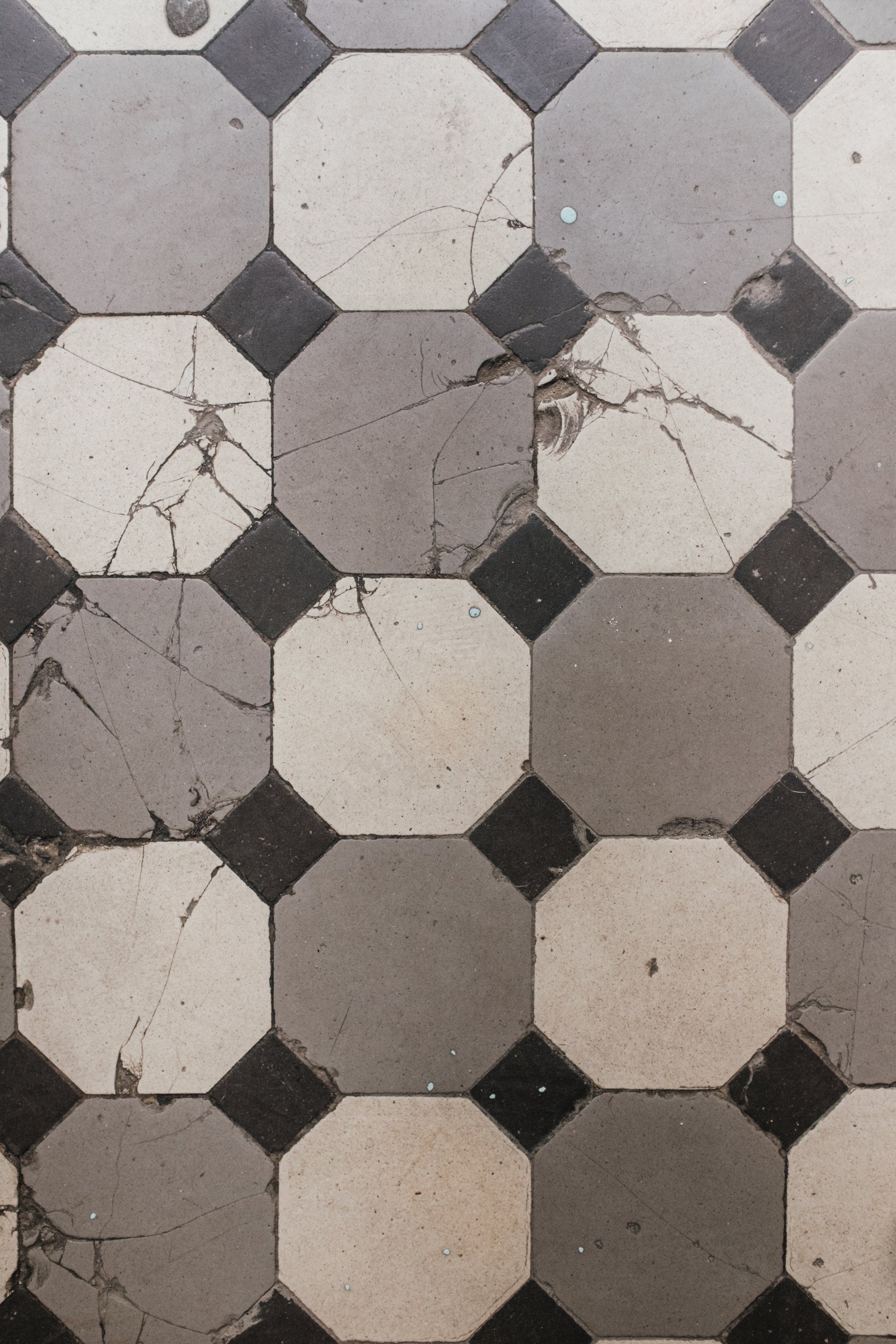When to Replace your Flooring
Do you need new tile floors?

When deciding whether to replace your current tile flooring, it's essential to take your time and carefully weigh the options. Keeping a watchful eye out for any signs of wear and tear is vital. If you notice that your tiles are starting to crack, chip, or show other types of damage, consider a replacement.
Similarly, if the grout between your tiles is discolored, stained, or missing in certain areas, this could be an indicator that it's time to start exploring your options. It's worth keeping in mind that outdated or out-of-style tiles can also be a valid reason to consider a replacement.
When choosing a replacement for your tile flooring, it's essential to consider a few key factors. First, you'll want to select a high-quality material that is durable and long-lasting. Some popular options include ceramic, porcelain, and natural stone tiles. Additionally, consider the color and pattern of your new tiles, as this can significantly impact the look and feel of your space.
Types of Tile Flooring
There are several types of tile flooring, including ceramic, porcelain, natural stone, and glass. Each type has its unique properties and benefits.
Ceramic tiles are made from a mixture of clay and other natural materials. They are durable and easy to maintain, making them a popular choice for high-traffic areas.
Porcelain tiles are stronger and longer-lasting compared to ceramic tiles, making them ideal for areas that experience heavy foot traffic. They are also resistant to scratches, stains, and moisture.
Natural stone tiles like marble, travertine, and granite are highly sought-after for their natural beauty and unique patterns. They are also durable and long-lasting.
Glass tiles are known for their vibrant colors and reflective surfaces. They are popular for backsplashes, accent walls, and decorative accents.
Tile flooring is a significant investment you'll likely be living with for years to come, so choosing a high-quality replacement that will stand the test of time is crucial.
Installation and Maintenance
Tile flooring installation requires careful planning and expertise to ensure a long-lasting and beautiful result. Proper preparation of the subfloor, the correct adhesive, and grout selection are essential for a successful installation.
Tile flooring maintenance is relatively easy, requiring regular sweeping and mopping to keep them clean. However, it's important to avoid harsh chemicals and abrasive tools that can damage the tiles' surface.
Be sure to find a reputable contractor or installer, like Floors for Less, to handle the replacement process, as this can ensure that your new tiles are installed correctly and safely.







